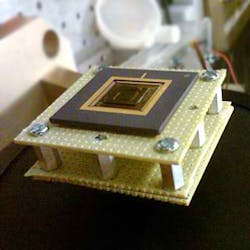This post centers around new findings coming out of the
Massachusetts Institute of Technology (MIT) on microelectromechinaical
systems, or MEMS. Energy harvesting has been a very interesting topic of conversation within manufacturing because it supposes that mechanical vibrations from motors or other industrial equipment can produce a consistent energy source for other devices. For example, wireless sensors networks could be powered by vibrations from a pipeline in the field, instead of battery power. That's been a big issue in the adoption of wireless sensor networks.
Past developments with energy harvesting have relied on piezoelectric (PZT) technology or multiple PZT layers on a microchip. However, PZT technology depends on mechanical vibrations within a certain frequency and outside of it, no power can be
generated. Some have pushed for more "layers" on a chip to pick up more
vibrations (or more energy), but that drives up costs and sensors need to be inexpensive for large deployments.
These new MIT findings see a design that increases the device's
frequency range or bandwidth, while maximizing the power (energy) density. MIT researchers put it through a series of vibration tests and have calculated
that the device was able to generate 45 microwaves of power with just a
single layer of PZT--an improvement of two orders of magnitude compared
to current designs, says MIT.
The MIT team published its results in the Aug. 23rd online edition of Applied Physics Letters.
>> Click here to read the MIT ENERGY-harvesting research paper.
About the Author
Grant Gerke
Digital Managing Editor
Sign up for our eNewsletters
Get the latest news and updates

Leaders relevant to this article:
